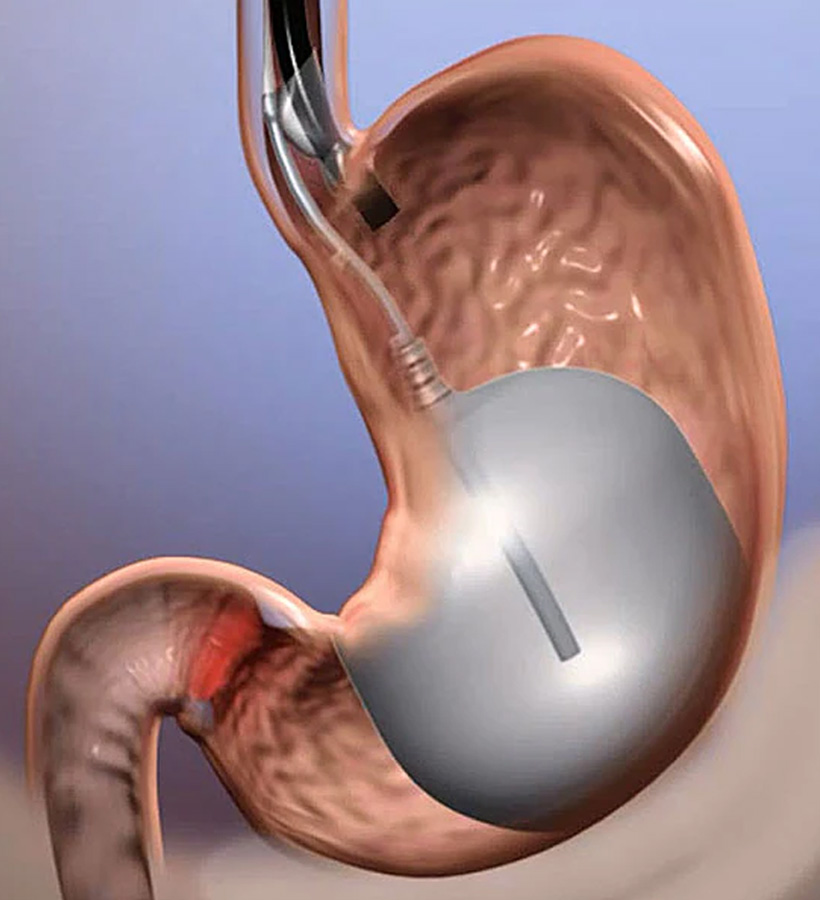Mail Us
info@getweightloss.in
Call Us
+91 - 81212 00600
info@getweightloss.in
+91 - 81212 00600
info@getweightloss.in
+91 - 81212 00600

Maintaining a healthy weight is pivotal for overall well-being. It impacts not only physical health but also mental and emotional wellness. In this article, we delve into the intricate relationship between weight gain, weight loss, and their profound effects on health.
Weight fluctuations can significantly influence various aspects of health. From cardiovascular issues to mental health concerns, the consequences of not managing one’s weight can be far-reaching. As we explore the options for weight management, one innovative approach stands out – the Intragastric Balloon.
The Intragastric Balloon is a non-surgical intervention designed to assist individuals in their weight loss journey. This inflatable medical device is placed in the stomach temporarily, providing a sense of fullness and reducing the amount of food one can consume.
The primary objective of the Intragastric Balloon is to facilitate weight loss without resorting to surgery. It acts as a tool to help individuals adopt healthier eating habits and lifestyle changes. The total body weight loss is measured at 20.1%, with an estimated weight loss of 45.8%. (Source: NCBI)
Let’s dive into detail about this non-surgical procedure in detail. Read ahead to know more.
The Intragastric Balloon is a balloon for weight loss revolutionary non-surgical weight loss, offering a detailed and effective solution for individuals struggling with obesity. This medical device is typically made of soft, durable silicone and is inserted into the stomach in a deflated state. Once in place, it is filled with a saline solution, expanding to occupy space within the stomach. This inflation induces a sense of fullness, reducing the capacity for food intake and promoting weight loss.
Unlike other weight loss methods, such as surgery or pharmacological interventions, the Intragastric Balloon does not involve incisions, making it a minimally invasive alternative. This aspect contributes to quicker recovery times and a lower risk of complications, providing a safer option for those seeking non-surgical interventions.
The concept of intragastric balloons for weight loss has been in development since the early 1980s, with ongoing advancements in materials and insertion techniques. Over the years, the technology has evolved, leading to improved efficacy and safety, making it a viable choice for individuals looking to embark on a non-invasive weight loss journey.
The intragastric balloon for obesity works through a carefully orchestrated procedure aimed at assisting individuals in their weight loss journey. Before the actual insertion, patients typically undergo a thorough evaluation to ensure they are suitable candidates. This evaluation may involve medical assessments, discussions about lifestyle changes, and consultations with healthcare professionals. Once deemed appropriate, the actual procedure involves the insertion of a deflated balloon through the oesophagus, where it is guided into the stomach. Once in position, the balloon is filled with a sterile saline solution, expanding to occupy space within the stomach. This inflation induces a feeling of fullness, helping individuals control their portion sizes and adhere to a controlled diet. The procedure is minimally invasive, usually performed on an outpatient basis, and typically takes around 20 to 30 minutes.
The intragastric balloon for weight loss pre-procedure requirements may include fasting for a specified period before the intervention and temporary discontinuation of certain medications. Post-procedure steps involve monitoring and follow-up appointments to assess progress and address any concerns. The Intragastric Balloon is not a permanent fixture; it is typically removed after six months. Removal is a straightforward outpatient procedure, where the deflated balloon is extracted through the esophagus. Post-removal, patients are advised to continue with lifestyle changes, including healthy eating habits and regular exercise, to maintain the weight loss achieved with the Intragastric Balloon. Regular follow-ups with healthcare professionals play a crucial role in ensuring sustained success and addressing any potential challenges in the weight maintenance phase.
Studies indicate that excess weight loss 6 months after balloon removal was 14% to 50.9%. Source: St. Louis Bariatrics
The intragastric balloon for obesity presents a myriad of benefits, positioning itself as a promising option for individuals pursuing effective weight loss.
The Intragastric Balloon, a non-surgical weight loss procedure though considered a relatively safe weight loss intervention, is not without potential risks and side effects. It’s essential for individuals considering this procedure to be aware of the following aspects:
Possible Risks and Side Effects
While most individuals tolerate the Intragastric Balloon well, there are potential risks and side effects associated with this treatment for weight loss. These may include:
The frequency of side effects can vary from person to person. While some individuals may experience minimal discomfort, others may encounter more pronounced symptoms. It’s crucial to note that most side effects are temporary and tend to subside as the body adjusts to the presence of the Intragastric Balloon for obesity.
Criteria for Consideration:
Who Should Avoid?
Embarking on a journey toward sustained weight loss involves more than the initial procedure itself; it requires a commitment to postoperative care and lifestyle modifications. Here are key tips for effective aftercare:
The Intragastric Balloon emerges as a groundbreaking non-surgical solution in the realm of weight loss, offering individuals a viable option to manage their weight effectively. Its non-invasive nature, coupled with good outcomes and health benefits, positions it as a promising choice for those seeking sustainable weight loss.
For those ready to embark on a transformative weight loss journey, the Intragastric Balloon offers a path that combines effectiveness with safety. As a next step, consider exploring further at getweightloss.in to access valuable resources and guidance on initiating your weight loss journey. We are a leading weight loss surgery hospital in Hyderabad, Telangana.
Remember, the decision to pursue weight loss is personal, and consulting with healthcare professionals is crucial to determine the most suitable approach based on individual health and circumstances.

